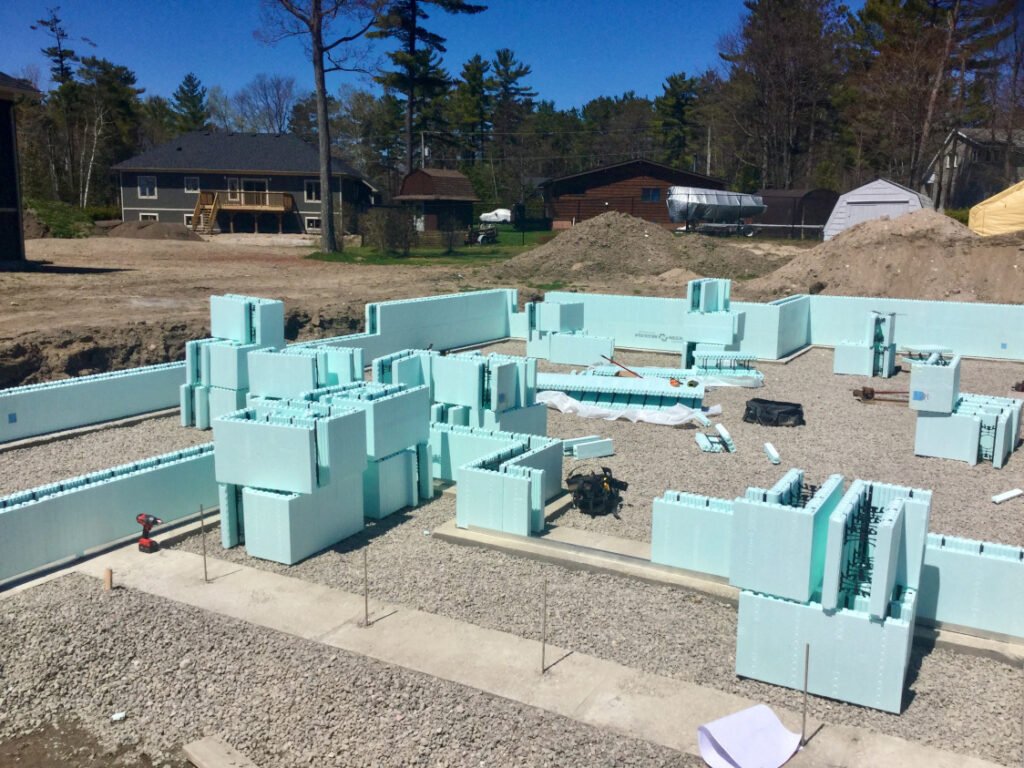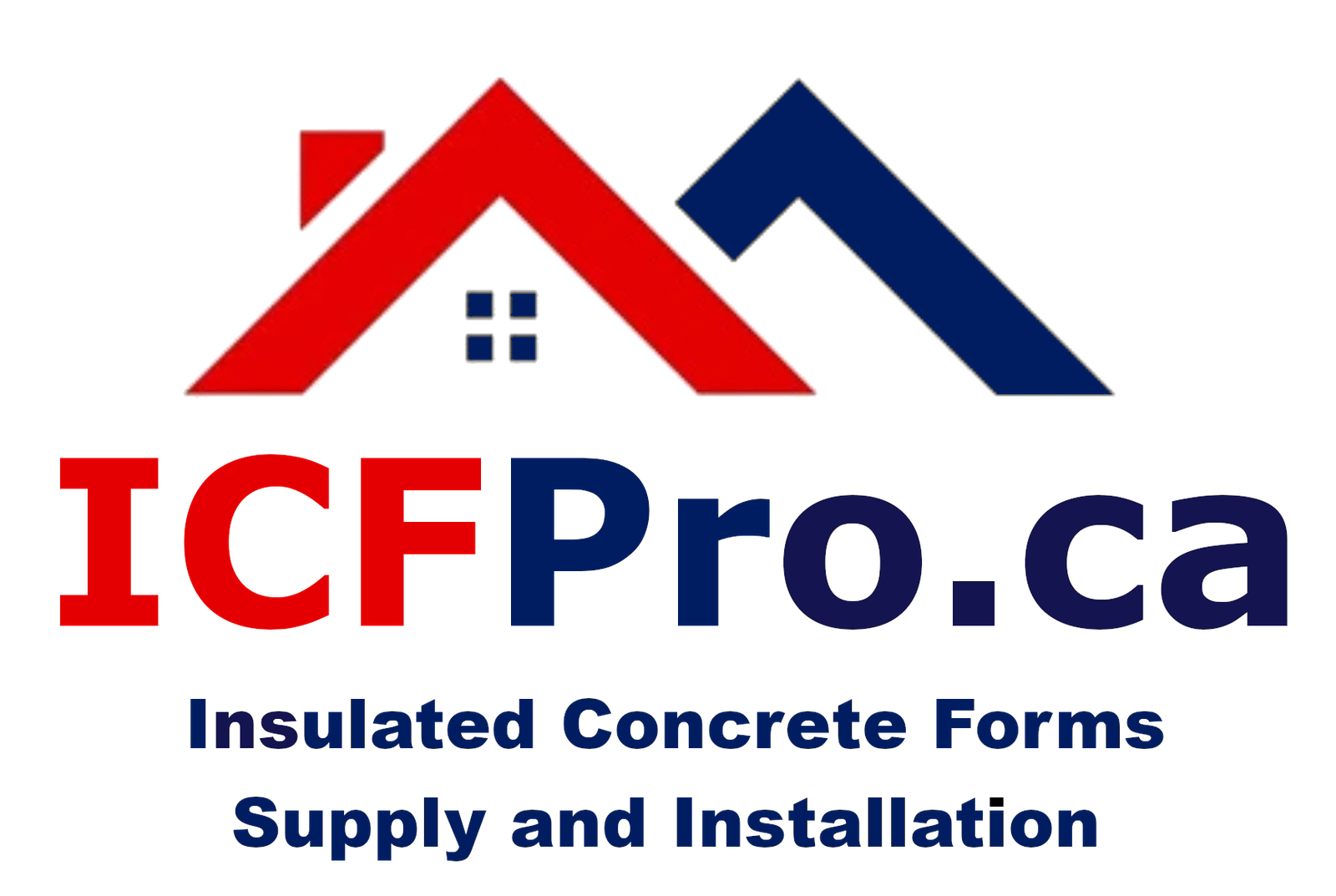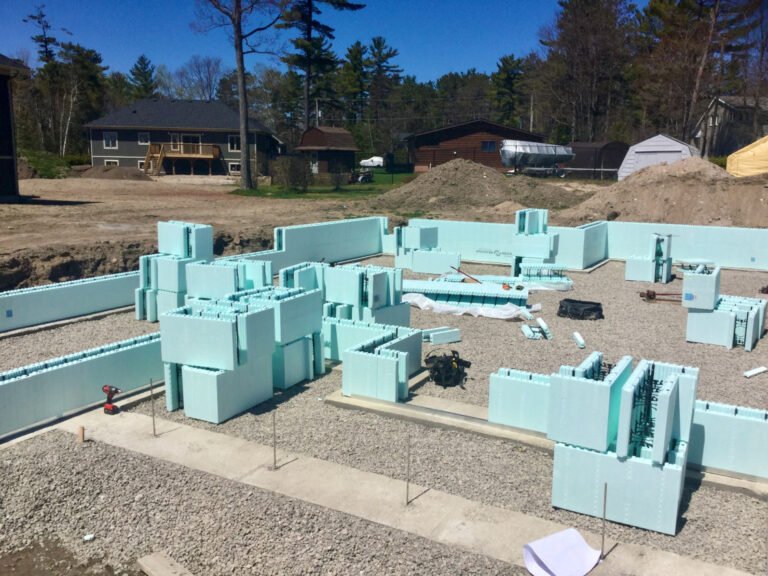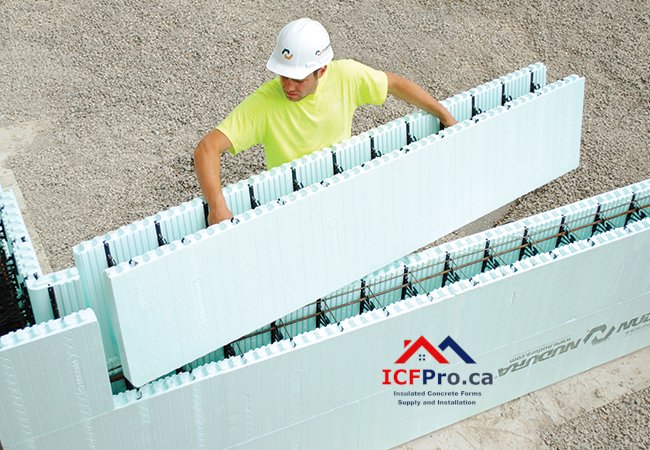ICFPro.ca is a division of ICFhome.ca - Phone 1 866 868-6606 - Direct Line 1 705 533-1633 - Email: info@icfhome.ca
Insulated Concrete Forms Manufacturers

If you’re diving into the cozy world of insulated concrete forms manufacturers, it’s been a wild ride lately, with the industry bursting at the seams with new inventions and progress. Let’s put our magnifying glasses on the big dogs in the field and the buzz-worthy trends in the ICF scene.
Top Insulated Concrete Form Companies
In the 2023 & 2024 scene-stealing reports, the champs of the North American Insulated Concrete Form (ICF) scene are RPM International Inc., CEMEX S.A.B. de C.V., Amvic Inc., Quad-Lock Building Systems, and Nuform Building Technologies Inc. These guys are sitting pretty, thanks to their top-tier ICF goodies that are all about keeping Mother Earth happy with eco-friendly and energy-smart building ideas (Mordor Intelligence).
| Company Name | Market Share (%) |
|---|---|
| RPM International Inc. | 20 |
| CEMEX S.A.B. de C.V. | 15 |
| Amvic Inc. | 12 |
| Quad-Lock Building Systems | 10 |
| Nuform Building Technologies Inc. | 8 |
Growing Trend in ICF Market
ICF is catching some serious traction, with the big fish making all sorts of moves like they’re on a business chessboard—dropping cash, showing off shiny new products, and shaking hands on partnerships and buyouts. The drive behind this hustle? Everyone and their grandma wants a home that’s kinder to our planet without burning a hole in their pockets.
North America is king in this scene, thanks to how ICFs cut down on utility bills, make homes tough as nails, and speed up build times like never before. Local strict laws that won’t let you build a cardboard shack are adding to this growth.
These manufacturers are pulling rabbits out of hats to keep up with the growing demand for eco-wise building methods, promising even more growth down the line. Insulated Concrete Forms have been the cool kids on the block for ages, with their energy-smart rep getting stronger thanks to green building booms.
For those new homeowners and builders dipping their toes into ICF waters, keeping up with who’s who and what’s new helps them make savvy choices for their next big build adventure.
Understanding Insulated Concrete Forms
So, you’re curious about insulated concrete forms (ICFs)? Let’s peel back the curtain on this cool construction wonder jam-packed with energy-saving goodness and tons of advantages.
What Are Insulated Concrete Forms?
Insulated Concrete Forms, or ICFs if we’re keeping it casual, are like the build-your-own sandwich kit of the construction world. Imagine concrete walls hugged tight between layers of snug insulation. This nifty setup results in walls that are as strong as they are cozy. It’s no wonder ICFs are winning hearts and blueprints in residential and commercial low-rise buildings. They’re the superhero of walls with their energy-saving heroics and durability.
ICFs make buildings rock solid, offering some sweet perks like top-notch insulation and soundproofing. They’re like the chameleon of construction, good for more than just walls—they can step up as floors, interior walls, roofs, and even backyard pools! It’s the MacGyver of building products (gb&d Magazine).
Benefits of ICFs
Why should ICFs get your vote? Well, they’re the builder’s BFF when it comes to smart and sustainable setups. Sure, you might shell out a bit more at the start compared to your grandma’s wood frames, but those sweet long-term perks are like getting a gift that keeps on giving.
Let’s talk about energy efficiency. Homes with ICFs can slash their energy bills by up to 20% or more, and that’s no small change. Their insulation game is strong with a typical R-value around 20. This makes for snug buildings that keep you warm in winter and cool in summer while giving a high-five to Mother Earth by shrinking that carbon footprint.
ICFs also build structures that laugh in the face of fire, mold, and pests. Thanks to their tough-as-nails walls, buildings last longer and save you on repairs down the line. Plus, they double up as a noise-cancelling master—bye-bye, noisy neighbors!
To wrap it up, Insulated Concrete Forms pack a punch in terms of strength, energy savings, and being eco-friendly, making them a no-brainer choice for new homeowners and builders in the market for something rock-solid and forward-thinking. Check out our handy guide to building with insulated concrete forms for more ways to bring ICF magic to your projects.
Choosing the Right Manufacturer
Picking the right insulated concrete forms manufacturers can be a real game-changer for new home buyers and builders. Think of these companies as your trusty sidekicks, providing not just top-notch materials but also backing you up through the whole building escapade. Here’s some stuff to mull over and a few tips from folks who’ve been around the block a time or two.
Factors to Consider
- Reputation and Experience: Before you hitch your wagon to a manufacturer, check out their street cred. Folks like Airlite Plastics (Fox Blocks), Quad-Lock Building Systems, NUDURA Inc. (RPM International Inc.), Nuform Building Technologies Inc., and Logix have come through like champs in the North American ICF scene (Mordor Intelligence). If they’ve been around the block and have happy customers, chances are, they won’t disappoint you either.
- Product Range and Innovation: Take a peek at their catalog—are they offering the same old stuff, or are they mixing it up with some cutting-edge goodies? You want them to be on the ball with energy-efficient and environmentally friendly options. Every innovation counts towards a snugger, more planet-friendly home.
- Customer Support and Training: Good support is like having a lifeline. Choose a manufacturer that won’t leave you hanging—think guidance on slapping up those forms, tech help, and all-around hand-holding. When things go pear-shaped, having someone to call can be a lifesaver.
Recommendations From Builders
Builders with experience using insulated concrete forms might just be your secret weapon. Their hands-on knowledge can give you the lowdown on which manufacturers deliver the goods and which ones, well, not so much. Professional tips can steer you to a manufacturer that’s a perfect match for your project dreams.
Spending some time on these thoughts and getting advice from builders who know the ropes can lead you to the right manufacturer pick for your construction gig. Teaming up with a reliable, rock-solid manufacturer ensures your building materials are top-tier, setting your project up for smooth sailing and lasting success.
Cost Shennanigans
In the wild and wooly world of construction, figuring out how much you should plunk down for insulated concrete forms (ICFs) versus your good ol’ traditional methods is as thrilling as a rodeo! Here’s why new home buyers and builders need a calculator, a crystal ball, and a cup of strong coffee to make these money matters make sense.
Burn Money Now, Save Bucks Later
Alright, let’s talk about the elephant in the room – the initial sticker shock. ICFs will set you back an extra $3 to $5 per square foot compared to your usual wood frames. Yeah, that can be a bit of a wallet-pinch, but wait! ICFs are like that expensive kitchen blender you bought – initially pricey, but boy, do they save on the long haul (Check it out at NY Engineers).
These ICF structures keep the warmth in winter and the cool in summer, dramatically slashing energy bills – think up to 20% or more savings on keeping your place comfy. Plus, they help Mother Earth breathe easier by reducing CO2 emissions over the long run (Rebel against high bills at NY Engineers).
Squaring Off: ICFs vs. The Old Dogs
Yep, ICFs start off more expensive than those old wooden frames, but their efficiency superpowers will have you syncopating with glee later on. These reinforced concrete wall wonders end up being more dollar-wise than their CMU cousins because CMUs often demand extra steel what’s-its in the form of rebar and embeds you didn’t think to bargain on (See the details at Nudura).
Oh, and if you hate waiting forever for a project to wrap, here’s a tidbit: putting up stuff with ICFs is quicker than a squirrel on a hot tin roof. Seriously, you’re looking at shaving weeks or even months off construction time, slashing labor costs, and getting move-in ready faster too! It’s like fast-forwarding to the good parts (Scoot on over to gb&d Magazine for more).
So here’s the scoop: if you’re comparing up-front might versus long-haul powerhouse, factor in that ICFs’ upfront splurge could lead to substantial piggy-bank augmentation down the road. Consider the dollars, the planet-love, and the general awesome-ness that ICFs bring, then make the call between sticking to the old-school ways or joining the ICF wave!
Design and Construction Advantages
When dealing with Insulated Concrete Forms (ICFs), there are some pretty cool perks in how quickly and easily you can get things built, not to mention the loads of things you can do with them!
Speed and Ease of Construction
Building with Insulated Concrete Forms (ICFs) is like putting together a great big, life-size Lego set, only faster. Word on the street, according to gb&d Magazine, is that using these bad boys can chop off as much as two weeks to four months from a project’s schedule compared to the usual building materials out there. Their simple click-together design means your building gets to start showing off its charms in record time.
And just when you thought it couldn’t get any better, ICF makers have gone all out, developing special ICFs which aren’t just your run-of-the-mill straight wall panels. Picture this: walls that can bend, twist and turn with curves, corners, and even a fancy brick ledge for good measure (gb&d Magazine). This kind of flexibility means you could build everything from a classic shack to a swirling architectural masterpiece without breaking a sweat.
Versatility in Applications
One of the big wins for ICFs is you can use them in all sorts of building projects. The industry standard kicks off with ICFs that are around 48″ x 16″, according to the smarty pants over at ICF Builder Magazine. But hey, variety is the spice of life, right? Some blocks even stretch up to 12″ or 18″, while others flip the script and go vertical. This lets builders mix, match, and design a place just the way it’s pictured in their heads.
Now, there are also these superhero versions called screen-grid block systems, which pack higher R-Values and use half the concrete of their all-foam cousins (ICF Builder Magazine). These tough cookies are sturdier and use less bracing, making them superhero-perfect for many projects. And guess what? You can slap some finishing touches directly on them without needing anything extra—easy peasy!
As if that wasn’t enough choice, there are wood fiber blocks made with wood fiber and cement that do a stellar job keeping the place insulated just like concrete, or even vinyl forms for those who want a chic, finished look right away. With EPS inserts, you can make them even toastier! Basically, it’s a builder’s paradise of options for tweaking and playing to fit all kinds of wild and wonderful designs.
All these perks – the fast build, the infinite creative playground – open up a world of innovative possibilities, letting folks dabble in chic designs while making use of construction methods that are all about practicality and speed. Whether working on houses, commercial spaces or factories, ICFs are ready to roll with the unique needs of the latest construction ideas.
Innovative Features and Technologies
In the land of insulated concrete forms (ICFs), manufacturers have been hustling to pop out fancy new gadgets and gizmos, shaking things up in modern construction. Let’s chat about the spiffy ICF products making waves and helping us keep our cool (literally).
Advanced ICF Products
ICF makers have been busy little bees, cooking up improvements that fit a wild range of building needs. They’re not just cranking out plain Jane wall panels anymore—now you can find ICFs with all sorts of twists and turns, like curves, corners, and even places to stick a brick ledge. That’s handy dandy, huh? (gb&d Magazine).
Take the IntegraSpec ICF system, for example. It’s like the Swiss Army knife of ICFs with its cool H-clip design. This lets you play around with different concrete core sizes by smooshing more webs together. You can pour that stuff to your heart’s content—24 inches thick and 8 feet tall in one go! It’s changing the game for concrete slingers everywhere.
These ICF upgrades don’t just make building a breeze; they let architects and builders dream big and bold, crafting killer designs while making sure the building stays tough and energy-smart.
Enhancements in Energy Efficiency
One awesome boon of ICFs is slashing energy needs for heating and cooling. They play a mighty role in axing those pesky carbon emissions and backing green construction.
ICF buildings do a bang-up job saving CO2 compared to old-school wood frame houses and offer top-notch insulation and thermal oomph. They help the planet and keep your wallet happy with energy savings in the long run.
By blending top tech and eco-friendly tactics, ICF makers are steering towards solutions that put energy savings, toughness, and Earth-love front and center. These juicy improvements show their vow to shake up construction forever, making ICFs the building material of choice for a swell future.



